Hola amig@s de Hive, hoy les hablaré acerca del Parque de los Lagos Politvice y para ello quisiera comenzar con una frase de Albert Einstein que dice así: Mira profundamente en la naturaleza y entenderás todo mejor.
Hello Hive friends, today I will tell you about Politvice Lakes Park and for that I would like to start with a quote from Albert Einstein that goes like this: Look deep into nature and you will understand everything better.
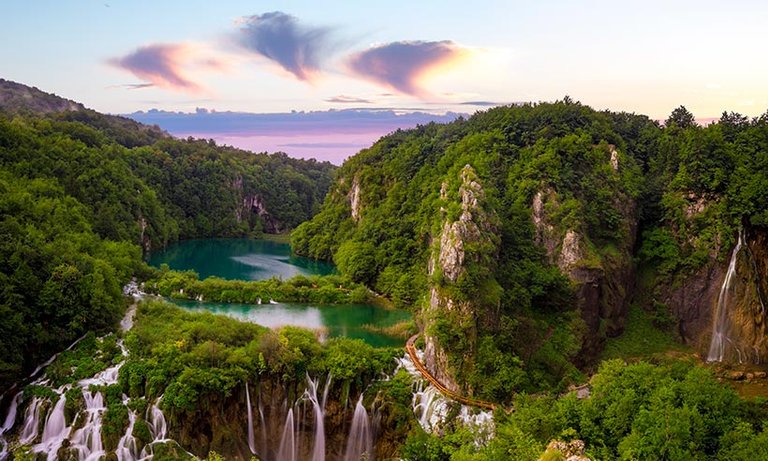
Foto tomada de ¡HOLA!/Photo taken from ¡HOLA!
El Parque de los Lagos de Plitvice es una zona de montaña kárstica boscosa que se ubica en la región orintal de Lika, en los Alpes Dináricos a 130 kilómetros de Zagreb, Croacia. Ocupa una superficie de 30000 hectáreas aproximadamente, de ellas 22000 están cubiertas por densos bosques de hayas en su mayoría, y existen 16 pequeños lagos que se comunican mediante una serie de cascadas (específicamente 92, entre ellas destaca la Gran cascada de Plitvice que con 78 metros es la más alta del Parque y del país) y arroyos.
The Plitvice Lakes Park is a forested karst mountain area located in the orintal region of Lika, in the Dinaric Alps, 130 kilometers from Zagreb, Croatia. It occupies an area of approximately 30000 hectares, of which 22000 are covered by dense beech forests mostly, and there are 16 small lakes that are connected by a series of waterfalls (specifically 92, including the Great Plitvice Waterfall, which at 78 meters is the highest in the Park and the country) and streams.
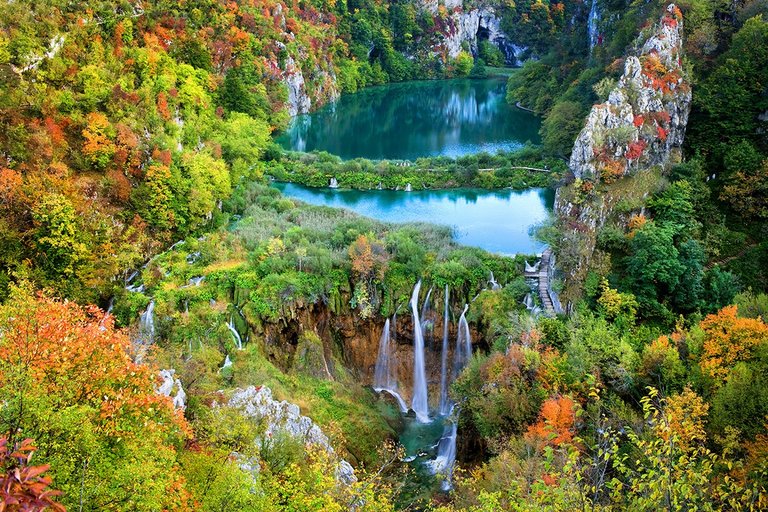
Foto tomada de Visitteo/Photo taken from Visitteo
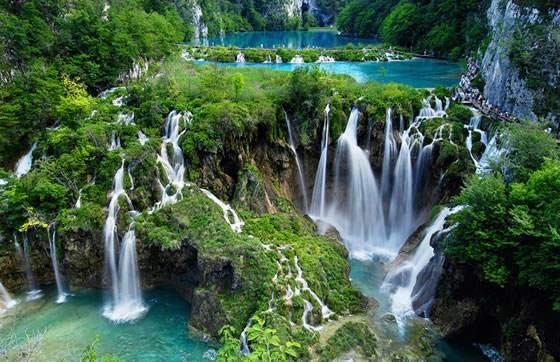
Foto tomada de Flores y Plantas/Photo taken from Flores y Plantas
Este Parque tiene una biodiversidad muy amplia (contiene más de 1400 especies de plantas, entre ellas 60 especies de orquídeas; una gran variedad de insectos, entre ellos más de 300 especies de mariposas, 160 de aves y mamíferos como los osos pardos, linces, ciervos, lobos, gato montés, entre otros) y se puede decir que está dividido en dos partes: los lagos superiores (conjunto de 12 lagos, que ocupan un espacio y volumen grande, son más dentados y con pendientes más suaves) y los lagos inferiores (conjunto de 4 lagos que se han formado en los estrechos barrancos calcáreos de pendientes abruptas); es importante destacar que estos lagos majestuosos son el resultado de un proceso biodinámico complejo de crecimiento de barreras de travertino (es una roca hueca y porosa que se forma por la precipitación del carbonato de calcio disuelto en agua utilizando plantas, algas y musgos). La tonalidad de las aguas varía de verde a gris plateada y de azul a azul turquesa (esto en dependencia de la concentración de minerales y los microorganismos allí presentes).
This Park has a very wide biodiversity (it contains more than 1400 species of plants, among them 60 species of orchids; a great variety of insects, among them more than 300 species of butterflies, 160 species of birds and mammals such as brown bears, lynx, deer, wolves, wild cat, among others) and it can be said that it is divided into two parts: the upper lakes (set of 12 lakes, which occupy a large space and volume, are more jagged and with gentler slopes) and the lower lakes (set of 4 lakes that have formed in the narrow limestone ravines with steep slopes); it is important to note that these majestic lakes are the result of a complex biodynamic process of growth of travertine barriers (it is a hollow and porous rock that is formed by the precipitation of calcium carbonate dissolved in water using plants, algae and mosses). The tonality of the water varies from green to silver-gray and from blue to turquoise blue (depending on the concentration of minerals and the microorganisms present).
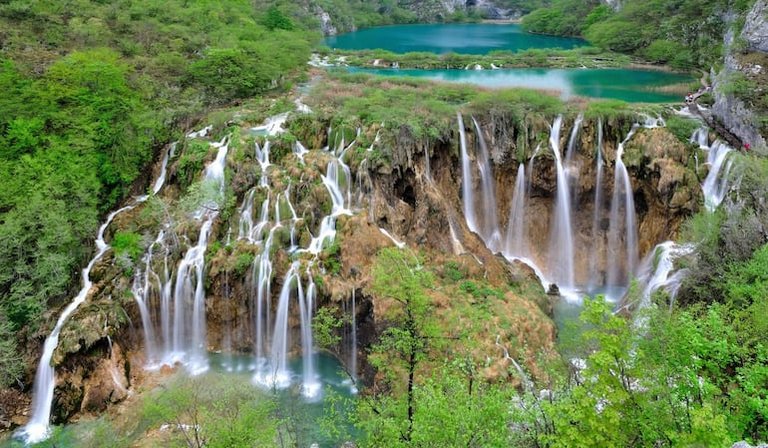
Foto tomada de ABC Color/Photo taken from ABC Color
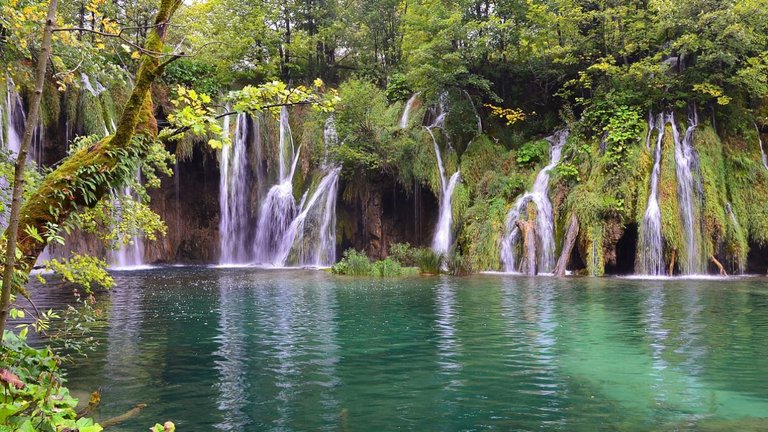
Foto tomada de Kolaboo/Photo taken from Kolaboo
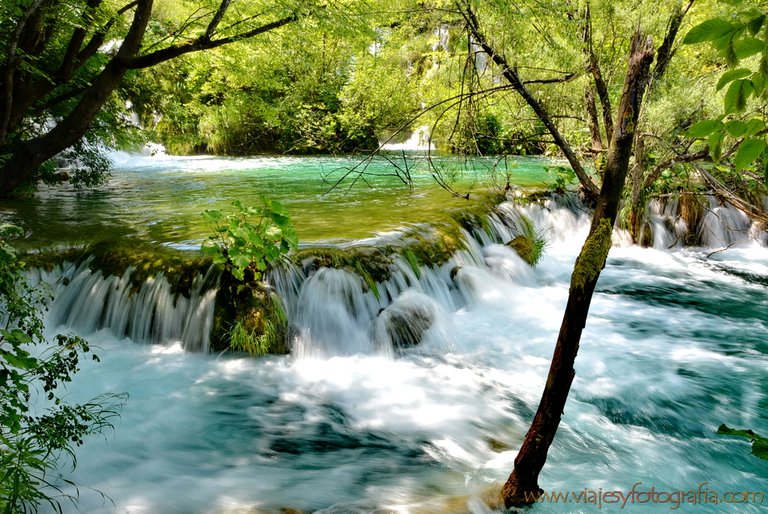
Foto tomada de Viajes y Fotografías/Photo taken from Viajes y Fotografías
La belleza incuestionable de este Parque hace que cada año sean miles las personas que lo visitan.
Esta región en sí, fue declarada Parque Nacional en 1949 y no fue hasta 1979 que la UNESCO lo declara Patrimonio de la Humanidad.
The unquestionable beauty of this park makes thousands of people visit it every year.
This region itself was declared a National Park in 1949 and it was not until 1979 that UNESCO declared it a World Heritage Site.
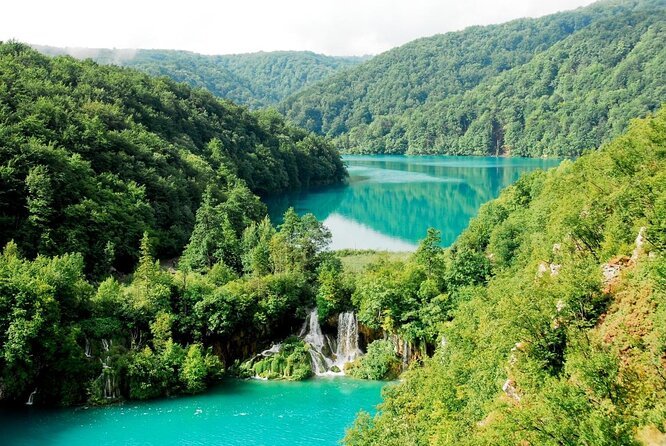
Foto tomada de Viator/Photo taken from Viator
Me despido...Hasta la próxima!!!/I bid you farewell...Until next time!!!
Saludos desde Cuba/Greetings from Cuba.
Traducido por DeepL App/Traduced by DeepL App.
Congratulations @cordovi! You have completed the following achievement on the Hive blockchain And have been rewarded with New badge(s)
Your next target is to reach 500 upvotes.
You can view your badges on your board and compare yourself to others in the Ranking
If you no longer want to receive notifications, reply to this comment with the word
STOPHermoso lugar 😍
👍